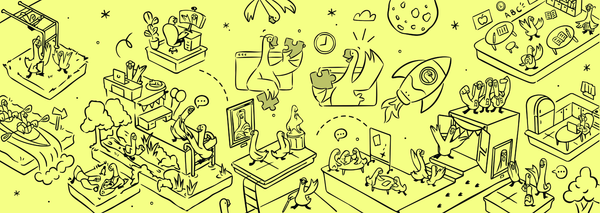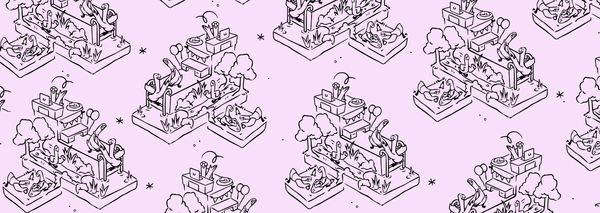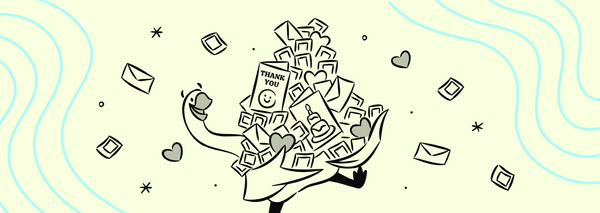The Office Team Building Scavenger Hunt Guide - Part 1: Event Preparation
This blog post was originally published on September 26, 2018. It was updated for formatting and with a few new ideas on August 30, 2022. Thanks for reading!
Scavenger Hunts are a fun recreational activity that can promote cooperation and teamwork between friends, colleagues, and even complete strangers. As the team behind the GooseChase, we've seen our fair share of scavenger hunts. In this 3-part guide (links to Part 2 and Part 3), we share some of our tips on organizing photo and video scavenger hunts for an office team-building event. Please note that while our guide will primarily be focusing on groups utilizing the GooseChase Platform to run their game in an office setting, these tips will certainly be helpful for any organizer putting together a scavenger hunt in general.
Not here for a hunt? Check out these other ideas for engaging your employees!
With any team building event, proper preparation could mean the difference between organizing a smash hit, or a total snoozer. Part 1 is all about preparation and organization to ensure that your event is a memorable experience for everyone involved.

Clearly Define Overall Goals for the Scavenger Hunt
This may seem like a no-brainer, but a lot of people dive right into the details without paying any thought to a coherent direction when organizing an office scavenger hunt. This is especially important for events where the participants aren't already familiar with their teammates; such as a corporate competition between different departments within an organization, or an onboarding event where new hires are just getting acquainted with their teammates. A few examples of overall goals for your scavenger hunt can include:
-
Introduce new recruits to a company that already has a rooted culture or dynamic.
-
Create tighter, cooperative relationships between team members who usually work independently or on separate teams.
-
Create an engaging experience for teams that enjoy competition and friendly rivalries. (This one is especially great for sales teams and athletic organizations!)
-
De-stress and relieve tension after a busy period at work.
For whatever reason that you are putting on your event, having a clear stated purpose that all organizers are on board for, can act as a guide for future organizing decisions down the road.

Announce Event Details in Advance
When trying to recruit people for an outing, typically the first questions your invitees will ask you are "When is it happening?", "How long will it take?" and "What do I need to bring?". Especially in a busy workplace, announcing the details of your event at least a few weeks in advance will allow enough time for your participants to move important appointments out of the way, and make sure that work to meet looming deadlines are completed beforehand. If you're planning a scavenger hunt that will involve more physical challenges, or if your missions involve a bit of running or jogging between challenge locations, it's nice to let your participants know they will need to dress accordingly.
In a typical 9-5 office workplace setting, we’ve found that the best scavenger hunts are organized with around 90 minutes of active game time. Add on approximately 30-45 minutes for instructions and debriefing, and you have a total event time of just over 2 hours. This is a great time frame as it makes it easy to schedule your event in the morning or the afternoon without impacting lunch breaks; 2 hours also leaves some time to spare before or after in case the schedule is delayed, or otherwise doesn't work out as planned.
Lastly, if any of your missions require your participants to be outdoors, make sure you keep an eye on the weather forecasts and have a backup time slot ready in case mother nature doesn't cooperate.

Organize Teams in a Way that Aligns with Your Event Goals
Remember the goals you brainstormed earlier in this guide? Team creation is just one of many areas where you can allow them to help direct your planning decisions. For example, let's say one of your event goals is to increase familiarity between members of two different departments that don't usually get the chance to interact with each other, strategically teaming up members from those departments might help you achieve that goal. Perhaps your office just went thrugh a busy season of recruiting and you're looking to use the scavenger hunt as an icebreaker event, mixing the fresh faces into teams with some of the veterans can help you achieve your event goal.
On the other end of the spectrum, scavenger hunts can also be a way to stoke friendly competition. Perhaps your organization consists of a healthy number of hockey fans, creating teams based on members who cheer for or against the home team could help settle a few workplace rivalries. For an organization that consists of many different tightly-knit teams, Engineering vs Marketing vs Accounting could be a good group experiment to observe how different minds think when completing mission challenges.
The beauty of scavenger hunts mean that you, as the organizer, have a lot of creative control over how you want the vibe of your team-building event through how you arrange teams. Make sure you put some thought into this step and don't just leave it to a spreadsheet to create your teams randomly!
That's it for Part 1 of our Team Building Scavenger Hunt Guide, When you're ready, proceed to Part 2, where we'll get mission creation and tips for running the event!
Take a look at some of our Scavenger Hunt Mission Idea Lists for inspiration!
What is GooseChase?
GooseChase is an online platform that helps organizers create and run digital scavenger hunt experiences for team building, learning, public engagement, or a variety of other events. Sign up and try creating a free recreational game, or contact us to learn more about our enterprise solutions!





